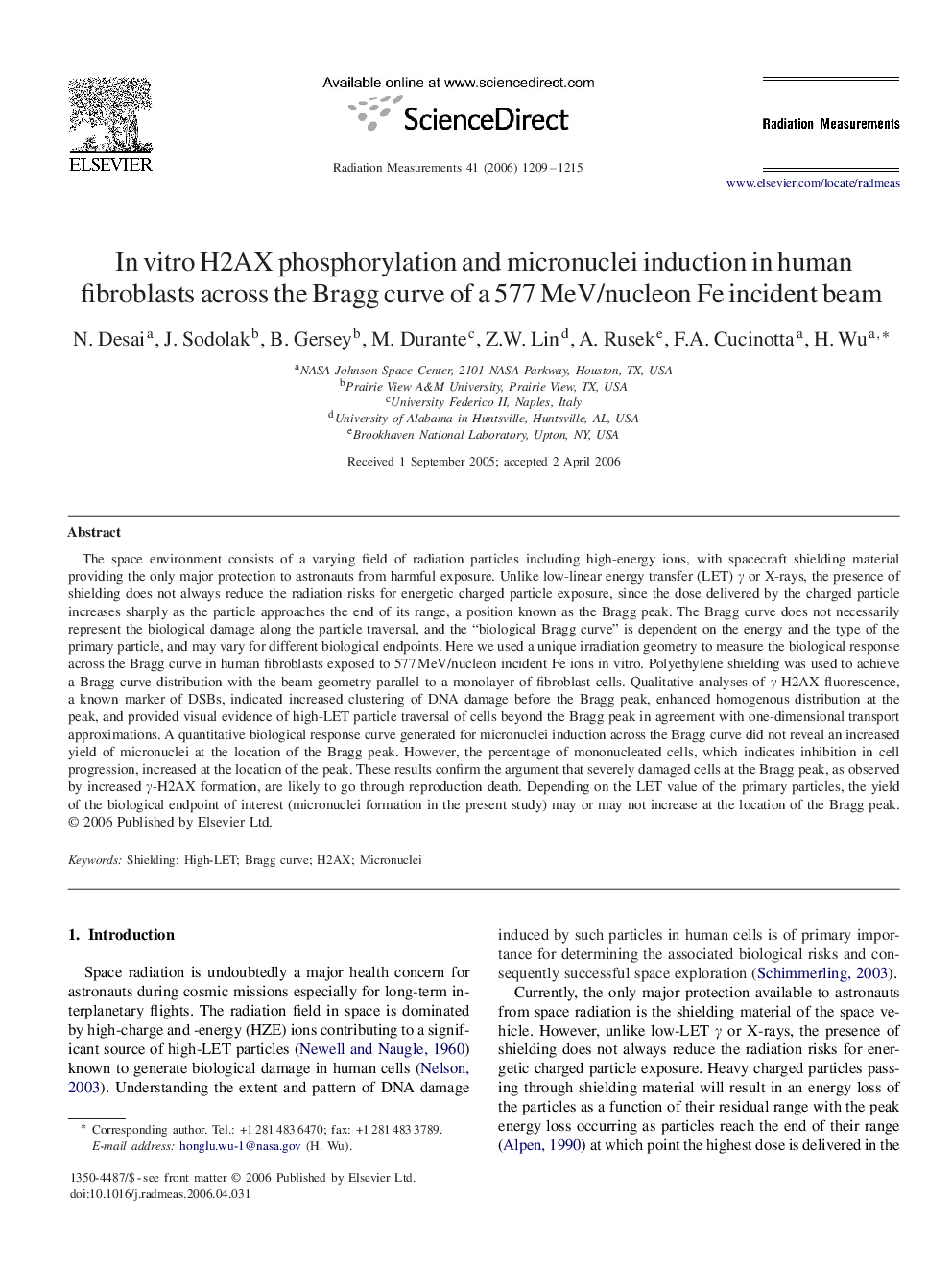| Article ID | Journal | Published Year | Pages | File Type |
|---|---|---|---|---|
| 1882127 | Radiation Measurements | 2006 | 7 Pages |
Abstract
The space environment consists of a varying field of radiation particles including high-energy ions, with spacecraft shielding material providing the only major protection to astronauts from harmful exposure. Unlike low-linear energy transfer (LET) γ or X-rays, the presence of shielding does not always reduce the radiation risks for energetic charged particle exposure, since the dose delivered by the charged particle increases sharply as the particle approaches the end of its range, a position known as the Bragg peak. The Bragg curve does not necessarily represent the biological damage along the particle traversal, and the “biological Bragg curve” is dependent on the energy and the type of the primary particle, and may vary for different biological endpoints. Here we used a unique irradiation geometry to measure the biological response across the Bragg curve in human fibroblasts exposed to 577 MeV/nucleon incident Fe ions in vitro. Polyethylene shielding was used to achieve a Bragg curve distribution with the beam geometry parallel to a monolayer of fibroblast cells. Qualitative analyses of γ-H2AX fluorescence, a known marker of DSBs, indicated increased clustering of DNA damage before the Bragg peak, enhanced homogenous distribution at the peak, and provided visual evidence of high-LET particle traversal of cells beyond the Bragg peak in agreement with one-dimensional transport approximations. A quantitative biological response curve generated for micronuclei induction across the Bragg curve did not reveal an increased yield of micronuclei at the location of the Bragg peak. However, the percentage of mononucleated cells, which indicates inhibition in cell progression, increased at the location of the peak. These results confirm the argument that severely damaged cells at the Bragg peak, as observed by increased γ-H2AX formation, are likely to go through reproduction death. Depending on the LET value of the primary particles, the yield of the biological endpoint of interest (micronuclei formation in the present study) may or may not increase at the location of the Bragg peak.
Related Topics
Physical Sciences and Engineering
Physics and Astronomy
Radiation
Authors
N. Desai, J. Sodolak, B. Gersey, M. Durante, Z.W. Lin, A. Rusek, F.A. Cucinotta, H. Wu,
